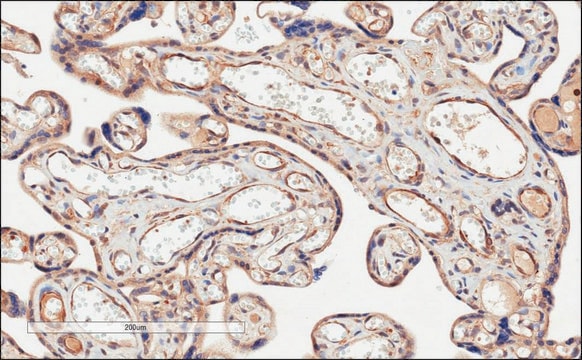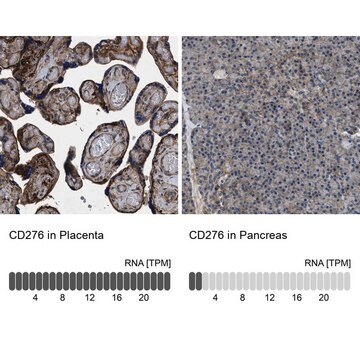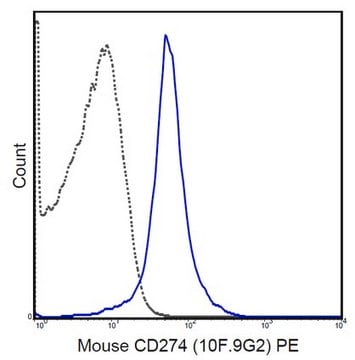MABC991
Anti-PD-L1 Antibody, clone 10F.9G2
clone 10F.9G2, from rat
Synonym(s):
PD-L1, PDCD1 ligand 1, Programmed death ligand 1, B7 homolog 1, B7-H1, CD274
About This Item
Recommended Products
biological source
rat
Quality Level
antibody form
purified antibody
antibody product type
primary antibodies
clone
10F.9G2, monoclonal
species reactivity
mouse
technique(s)
flow cytometry: suitable
immunohistochemistry: suitable
inhibition assay: suitable
isotype
IgG2bκ
NCBI accession no.
UniProt accession no.
shipped in
ambient
target post-translational modification
unmodified
Related Categories
General description
Specificity
Immunogen
Application
Induces Function Analysis: Blockade with a representative lot of anti-PD-L1 combined with IL-2 enhanced antiviral CD8 T cell responses during chronic LCMV infection (West, E.E., et. al. (2013). J Clin Invest. 123(6):2604-15).
Inhibition Analysis: A representative lot blocked the action of PD-L1 (Grabie, N., et. al. (2007). Circulation. 116(18):2062-71;West, E.E., et. al. (2013). J Clin Invest. 123(6):2604-15;El Annan, J., et. al. (2010). Invest Ophthalmol Vis Sci. 51(7):3418-23).
Quality
Flow Cytometry Analysis: 1 µg/mL of this antibody detected PD-L1 in one million EL4 cells.
Target description
Linkage
Physical form
Other Notes
Not finding the right product?
Try our Product Selector Tool.
Storage Class Code
12 - Non Combustible Liquids
WGK
WGK 2
Flash Point(F)
Not applicable
Flash Point(C)
Not applicable
Certificates of Analysis (COA)
Search for Certificates of Analysis (COA) by entering the products Lot/Batch Number. Lot and Batch Numbers can be found on a product’s label following the words ‘Lot’ or ‘Batch’.
Already Own This Product?
Find documentation for the products that you have recently purchased in the Document Library.
Customers Also Viewed
Our team of scientists has experience in all areas of research including Life Science, Material Science, Chemical Synthesis, Chromatography, Analytical and many others.
Contact Technical Service













